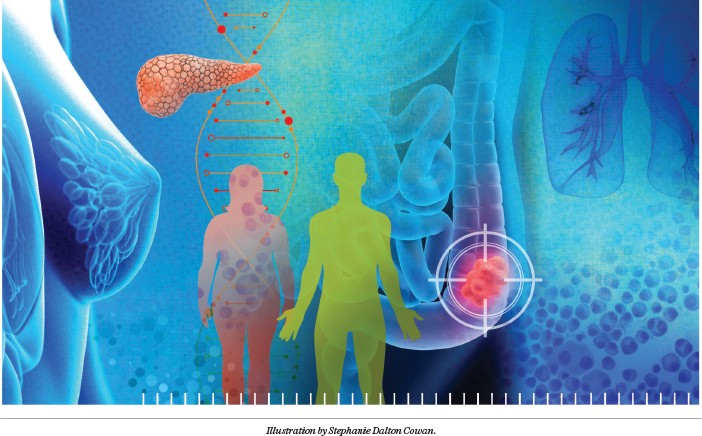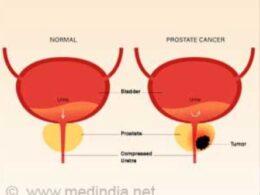Nature Reviews Clinical Oncology
Tomotaka Ugai, Naoko Sasamoto, Hwa-Young Lee, Mariko Ando, Mingyang Song, Rulla M. Tamimi, Ichiro Kawachi, Peter T. Campbell, Edward L. Giovannucci, Elisabete Weiderpass, Timothy R. Rebbeck & Shuji Ogino
Site editor:
Joaquim Cardoso MSc.
health transformation — journal
September 18, 2022
Key points
- The incidence of cancers of various organs diagnosed in adults ≤50 years of age has been rising in many parts of the world since the 1990s.
- Evidence suggests an aetiological role for risk factor exposures in early life and young adulthood, although specific effects of individual exposures remain largely unknown.
- The early life exposome (including, among other factors, diet, lifestyle, obesity, environmental exposures and the microbiome) has changed substantially, with variable trends observed around the world since the mid-20th century.
- The early-onset cancer epidemic might be one manifestation of increasing trends in the development of many chronic diseases in young and future generations.
- Prospective cohort studies using electronic health records and/or early-life biospecimen collection would enable the detailed investigation of early-life factors in relation to many future health outcomes, including cancer.
- Raising awareness of the early-onset cancer epidemic and improving the early-life environment should be our immediate goals: these are likely to reduce the burden of both early-onset and later-onset cancers.
The early life exposome (including, among other factors, diet, lifestyle, obesity, environmental exposures and the microbiome) has changed substantially, with variable trends observed around the world since the mid-20th century.
ABSTRACT:
What is the problem?
Over the past several decades, the incidence of early-onset cancers, often defined as cancers diagnosed in adults <50 years of age, …
- … in the breast, colorectum, endometrium, oesophagus, extrahepatic bile duct, gallbladder, head and neck, kidney, liver, bone marrow, pancreas, prostate, stomach and thyroid
- has increased in multiple countries.
What are the causes?
- Increased use of screening programmes has contributed to this phenomenon to a certain extent,
- although a genuine increase in the incidence of early-onset forms of several cancer types also seems to have emerged.
- Evidence suggests an aetiological role of risk factor exposures in early life and young adulthood.
- Since the mid-20th century, substantial multigenerational changes in the exposome have occurred (including changes in diet, lifestyle, obesity, environment and the microbiome, all of which might interact with genomic and/or genetic susceptibilities).
What are the requirements to learn about individual exposures?
- However, the effects of individual exposures remain largely unknown.
- To study early-life exposures and their implications for multiple cancer types will require prospective cohort studies with dedicated biobanking and data collection technologies.
- Raising awareness among both the public and health-care professionals will also be critical.
What is the scope of the paper?
- In this Review, we describe changes in the incidence of early-onset cancers globally and suggest measures that are likely to reduce the burden of cancers and other chronic non-communicable diseases.
Over the past several decades, the incidence of early-onset cancers, often defined as cancers diagnosed in adults <50 years of age, … has increased in multiple countries.
Evidence suggests an aetiological role of risk factor exposures in early life and young adulthood.
Since the mid-20th century, substantial multigenerational changes in the exposome have occurred (including changes in diet, lifestyle, obesity, environment and the microbiome, all of which might interact with genomic and/or genetic susceptibilities).
the effects of individual exposures remain largely unknown.
Selected images


References and additional information:
See the original publication
Cite this article
Ugai, T., Sasamoto, N., Lee, HY. et al. Is early-onset cancer an emerging global epidemic? Current evidence and future implications. Nat Rev Clin Oncol 19, 656–673 (2022). https://doi.org/10.1038/s41571-022-00672-8
Authors and affiliations:
Program in MPE Molecular Pathological Epidemiology, Department of Pathology, Brigham and Women’s Hospital, and Harvard Medical School, Boston, MA, USA
Tomotaka Ugai & Shuji Ogino
Department of Epidemiology, Harvard T.H. Chan School of Public Health, Boston, MA, USA
Tomotaka Ugai, Mingyang Song, Edward L. Giovannucci, Timothy R. Rebbeck & Shuji Ogino
Department of Obstetrics and Gynecology, Brigham and Women’s Hospital, Boston, MA, USA
Naoko Sasamoto
Department of Obstetrics, Gynecology, and Reproductive Biology,
Harvard Medical School, Boston, MA, USA
Naoko Sasamoto
Department of Global Health and Population, Harvard T.H. Chan School of Public Health, Boston, MA, USA
Hwa-Young Lee
Institute of Convergence Science, Convergence Science Academy, Yonsei University, Seoul, Republic of Korea
Hwa-Young Lee
Department of Social and Behavioral Sciences, Harvard T.H. Chan School of Public Health, Boston, MA, USA
Mariko Ando & Ichiro Kawachi
Department of Nutrition, Harvard T.H. Chan School of Public Health, Boston, MA, USA
Mingyang Song & Edward L. Giovannucci
Clinical and Translational Epidemiology Unit, Massachusetts General Hospital and Harvard Medical School, Boston, MA, USA
Mingyang Song
Division of Gastroenterology, Massachusetts General Hospital, Boston, MA, USA
Mingyang Song
Department of Population Health Sciences, Weill Cornell Medicine, New York, NY, USA
Rulla M. Tamimi
Department of Epidemiology and Population Health, Albert Einstein College of Medicine, New York, NY, USA
Peter T. Campbell
International Agency for Research on Cancer, Lyon, France
Elisabete Weiderpass
Division of Population Sciences, Dana-Farber Cancer Institute, Boston, MA, USA
Timothy R. Rebbeck
Zhu Family Center for Global Cancer Prevention, Harvard T.H. Chan School of Public Health, Boston, MA, USA
Timothy R. Rebbeck
Broad Institute of MIT and Harvard, Cambridge, MA, USA
Shuji Ogino
Cancer Immunology and Cancer Epidemiology Programs, Dana-Farber Harvard Cancer Center, Boston, MA, USA
Shuji Ogino
Originally published at https://www.nature.com on September 6, 2022.
Artigos relacionados:
Trends to Watch in Early-Onset Cancer Among Young Adults
Although the percentages are small, incidences are increasing in some of the deadliest cancers usually found in older adults— colorectal, lung, breast, pancreatic, and multiple myeloma.
The ASCO Post












